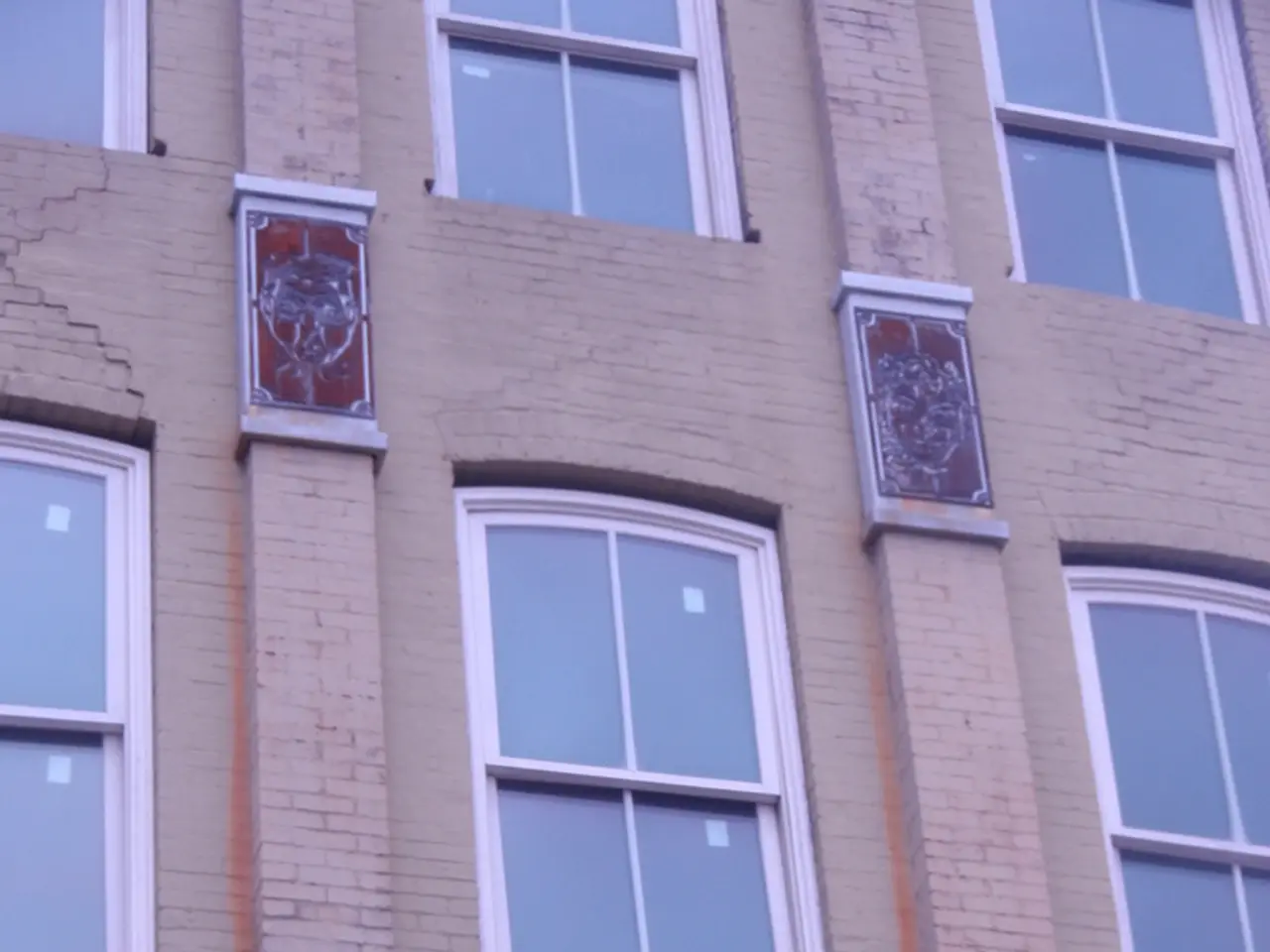Designers Successfully 3D Print Durable Glass Building Blocks
In a significant leap towards sustainable construction, researchers have developed a groundbreaking 3D-printed glass masonry that promises to revolutionize the industry. This innovative material, made possible by a custom 3D glass printing technology provided by MIT spinoff Evenline, could potentially serve as recyclable bricks for building facades and internal walls.
The new masonry, designed in the shape of a figure eight and interlocking like Lego bricks, has shown remarkable strength in mechanical testing. It withstood pressures similar to those of a concrete block, demonstrating its potential resilience in real-world applications.
To further showcase its potential, a team of researchers has constructed a wall of interlocking glass bricks as a structural demonstration. This wall stands as a testament to the viability of this new material in the realm of construction.
The concept of circular construction, which this new masonry supports, involves creating reconfigurable masonry that can be disassembled and reassembled. The ultimate goal is to supply generations of buildings using the same physical building blocks, minimizing the need for new materials and promoting a sustainable cycle for building materials.
In circular construction, buildings are disassembled at the end of their lifetime, and their materials are reused and repurposed whenever possible. This approach seeks to reduce the construction industry's "embodied carbon," which includes greenhouse gas emissions from manufacturing to demolition. By minimizing embodied carbon in construction, we can contribute to reducing overall greenhouse gas emissions.
Embodied carbon refers to the greenhouse gas emissions associated with every process throughout a building's construction. The aim of circular construction is to create a sustainable cycle for building materials, reducing the need for new materials and lowering carbon emissions.
The progress in 3D-printed, recycled glass reconfigurable masonry for circular construction extends beyond this innovative material. Researchers at the University of Portsmouth have developed compressed earth blocks (CEBs) incorporating powdered recycled glass as a stabilizing agent. These blocks, containing a mix of 10% lime and 10% recycled glass particles, have shown strength under intense pressure, offering a sustainable alternative to cement-based bricks with lower carbon emissions.
Moreover, 3D printing techniques are being applied to produce masonry and façade panels incorporating recycled glass and even plant-based materials. These innovations enable reconfigurable, circular design elements that support passive cooling, urban biodiversity, and material reuse.
The potential impact of this technology lies in its ability to reduce construction waste by repurposing glass, lower CO2 emissions from cement production, and facilitate circular building practices through reconfigurable modular masonry. Such innovations promote sustainability, urban ecological benefits, and resource efficiency in the construction sector.
MIT engineers are also developing a new type of reconfigurable masonry made from 3D-printed, recycled glass. The future of construction is undoubtedly moving towards circular practices, and this new material is a significant step in that direction.
- To capitalize on research advancements, MIT engineers are working on a novel 3D-printed masonry made from recycled glass, furthering the shift towards sustainable circular construction.
- The utilization of compressed earth blocks (CEBs) incorporating powdered recycled glass as a stabilizing agent, developed by researchers at the University of Portsmouth, signifies a sustainable alternative for cement-based bricks with lower carbon emissions.
- Employing 3D printing techniques to create recycled glass and even plant-based masonry and façade panels allows for reconfigurable, circular design elements that support passive cooling, urban biodiversity, and material reuse.
- In addition to principles of circular construction, the implementation of 3D-printed, reconfigurable masonry derived from recycled glass can promote urban ecological benefits, resource efficiency, and significantly reduce construction waste and CO2 emissions.




